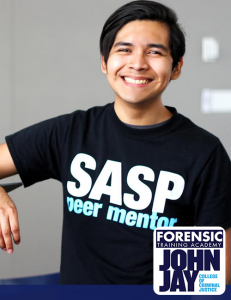
Negotiators tend to achieve more alignment in within-culture interactions compared to cross-cultural interactions and the use of formal languages and messages that emphasize law and regulations when interacting with perpetrators high on uncertainty avoidance helps to better align communication across cultures. This is the bottom line of a recently published article in Law and Human Behavior. Below is a summary of the research and findings as well as a translation of this research into practice.

Featured Article | Law and Human Behavior | 2017, Vol. 41, No. 1, 93-102
The Cultural Dimension of Uncertainty Avoidance Impacts Police-Civilian Interaction
Author
Ellen Giebels, University of Twente
Miriam S.D. Oostinga, University of Twente
Paul J. Taylor, Lancaster University and University of Twente
Joanna L. Curtis, Lancaster University
Abstract
This research examines how the cultural dimension of uncertainty avoidance-a person’s (in)tolerance for uncertain or unknown situations-impacts communication alignment in crises negotiations. We hypothesized that perpetrators high on uncertainty avoidance would respond better to negotiators who use formal language and legitimize their position with reference to law, procedures, and moral codes. Data were transcriptions of 53 negotiations from a Dutch-German police training initiative, where police negotiators interacted with a high (German) and low (Dutch) uncertainty-avoidant mock perpetrator. Consistent with accounts of cross-cultural interactions, negotiators tended to achieve more alignment in within-culture interactions compared to cross-cultural interactions. Moreover, German negotiators, who scored higher on uncertainty avoidance than the Dutch negotiators, were found to use more legitimizing messages and more formal language than their Dutch counterparts. Critically, irrespective of the negotiators’ cultural background, the use of these behaviors was a significant moderator of the degree to which negotiator and perpetrator aligned their communicative frames. Using legitimizing and formal language helped with German perpetrators but had no effect on Dutch perpetrators. Our findings show the effects of cultural background on communication alignment and demonstrate the benefits of suing more formal language and messages that emphasize alignment and demonstrate the benefits of using more formal language and messages that emphasize law and regulations when interacting with perpetrators high on uncertainty avoidance.
Keywords
Crisis negotiation, uncertainty avoidance, legitimizing, formality, sensemaking
Summary of the Research
We examined how the cultural dimension of uncertainty avoidance impacts communication alignment in crisis negotiations. We hypothesized that perpetrators high on uncertainty avoidance (German) compared to those with low uncertainty avoidance (Dutch) would respond better to negotiators who use formal language and legitimize their position with reference to law, procedures, and moral codes. Negotiators tended to achieve more alignment in within-culture interactions compared to cross-cultural interactions. Furthermore, our findings show the effects of cultural background on communication alignment and demonstrate the benefits of using more formal languages and messages that emphasize law and regulations when interacting with perpetrators high on uncertainty avoidance.
“The objective of most law enforcement interactions with civilians is to gain cooperation…In all such contexts, officers must make sense of a civilian’s behavior and its underlying motivations, because this allows them to adopt an approach that avoids misunderstandings and encourages cooperation. An important challenge to officers’ sense making in these situations is the cultural diversity of the parties encountered. Cultural differences can negatively influence mutual understanding and cooperation because the expectations and norms that aid sense making become incompatible and misleading…It is well documented that actors from individualistic cultures are more direct and explicit than actors from collectivistic cultures, and this in turn significantly affects how an interaction unfolds (p.93).”
“In the current research, we focus on a cultural dimension that has received less attention: uncertainty avoidance. Uncertainty avoidance reflects “intolerance for uncertain or unknown situations. Research suggests that societies differ in the extent to which they are concerned with certainty and predictability and the practical consequence of this concern in terms of social manifestations. To examine the impact of uncertainty avoidance, we observed negotiator-perpetrator dialogues in a highly realistic cross border police training exercise with a barricaded person…We examine the impact of uncertainty avoidance on the dynamics of mixed- and same-culture crisis negotiations conducted by German (high uncertainty avoidance) and Dutch (low uncertainty avoidance) negotiators…while their cultural profile is similar on other cultural dimensions, most notably individualism-collectivism, they sharply differ on the dimension of uncertainty avoidance…Another related dimension is tightness-looseness. Tight nations have strong norms and a low tolerance of deviant behavior, while loose nations are characterized by the opposite (p.94).”
“Our investigation of uncertainty avoidance considers relevant behaviors on two levels: strategy and language. At the level of strategy, we focus on influencing behaviors and the use of legitimizing. Legitimizing refers to what has been agreed on by society at large, including references to the law, procedures, and moral codes…At the level of language, we focus on the relationship between uncertainty avoidance and the formality of the negotiators’ speech…German police negotiators (i.e., high uncertainty avoidant) will use legitimizing messages more often than Dutch police negotiators (i.e., low uncertainty avoidant)…German police negotiators will use more formal language compared to Dutch police negotiators…There will be more alignment in negotiator and perpetrators’ behavioral choices in within culture interactions…compared to cross-cultural interactions…Negotiators’ use of legitimizing and formality will lead to a higher level of synchronous sensemaking in negotiations with German perpetrators but not Dutch perpetrators (p.94-95).”
“We tested the prediction that those high on uncertainty avoidance would show a preference for a communicative style that clarifies the purpose of an interaction and meaning of a delivered message. Consistent with this prediction, we found that uncertainty avoidance played a significant role in shaping the communication behavior of a negotiator and perpetrator in a crisis negotiation. Specifically, and as expected, we found that German police negotiators, who score relatively high on uncertainty avoidance, tended to use more legitimizing messages and more formality in their language choices than Dutch police negotiators who score low on uncertainty avoidance (p.99).”
“Interestingly, the effect for legitimizing messages was found only for messages that place high levels of authority on law and regulations, while we established no difference in the use of procedures and moral codes between Dutch and German negotiators. One reason for this might be that the communication of procedures (e.g., how are we going to ensure safety for all) is a standard approach that is embedded in training and procedures, and so it becomes standardized. This explanation is consistent with prior researchers’ finding that negotiators show more flexibility in their communication when the adaption is consistent with training than when it is consistent with training. Similarly, it may be that legitimizing messages that reference moral codes are avoided because they can e considered judgmental. This is consistent with the relative low occurrence rate of this message type across all negotiations (p.99).”
“An interesting aspect of our findings in relation to Dutch and German negotiator behavior is that both spoke to high uncertainty avoidant perpetrators (i.e., German) using different levels of legitimizing than when speaking to low uncertainty avoidant perpetrators (i.e., Dutch); both tended to use more legitimizing when they interacted with German compared to Dutch perpetrators. This suggests that these negotiators, perhaps as a result of experience or training, showed some flexibility toward the communicative preferences of the perpetrator. Moreover, their flexibility was culturally appropriate in that they communicated in ways that reduce uncertainty with perpetrators who scored higher on uncertainty avoidance (p.99).”
“Finally, as predicted by Hypothesis 3, our data suggest that legitimizing and formal language are behaviors correlated with increased alignment in interactions with high but not low uncertainty avoidant perpetrators. Specifically, the use of these uncertainty reducing behaviors was significantly correlated with the degree of alignment achieved in negotiations with German perpetrators, but had little effect on alignment with Dutch perpetrators. Thus, it appears that these behaviors are particularly appropriate for those high in uncertainty avoidance and this facilitates their sensemaking of the interaction…It remains possible that greater alignment is manifested as more appropriate strategy and language choices by the negotiator (p.99).”
Translating Research into Practice
“…We took a unique approach of examining actual behavior in crisis negotiations from different foci (persuasion, language use, and alignment) and assessed it at both the individual and dyadic level. We demonstrated that uncertainty avoidance had a coherent and distinct effect on the use of and response to messages reflecting legitimizing and formality, and that, when preferred, the use of such behavior led to higher levels of interpersonal alignment. For practitioners, our findings emphasize the need for-perhaps conscious-use of communication behavior, tailored to the cultural background of the other side. It also extends the need to merely focus on a personal connection in building rapport by establishing a more behavioral, skill-based connection (p.100).”
“Our findings also advance conflict and negotiation theory in general, because our findings can be expected to extrapolate to other domains. In particular, we expect our findings to be relevant for a broad range of police-civilian interactions, as well as for professionals working in the field (e.g., client services) where they are likely to be confronted with agitated or uncooperative others (p.100).”
Other Interesting Tidbits for Researchers and Clinicians
“A related point is that we ended the negotiations after 15 min…A logical next step would be to conduct similar analyses on a dataset enclosing negotiations from the beginning to end. This would also allow for a further exploration of the relationship between cultural differences expressed through (different types of) legitimizing behavior, as the effects for legitimizing were less convincing than for speech formality. It would also allow for an examination of whether or not the negotiation context impacts negotiators’ experienced state-level uncertainty avoidance… (p.100).”
“Other interesting avenues for future research might include the relationship between uncertainty avoidance and other psychological constructs and processes. That is, an aversion of ambiguity and a need for predictability may be connected to for example, higher trust in authorities, stronger ingroup/outgroup processes, as well as stronger face saving concerns. Finally, the scenarios used in our research are typical expressive crisis situations. In such situations, the communication is usually intense and emotional, and the police response may be regarded as adopting a crisis counseling role. These situations can be contrasted with more instrumental crisis negotiations, such as kidnapping for ransom or extortion, which look much like business transactions. It is thus an open question as to whether similar patterns of results will be found when the dynamics of instrumental situations are examined (p.100).”
Join the Discussion
As always, please join the discussion below if you have thoughts or comments to add!







